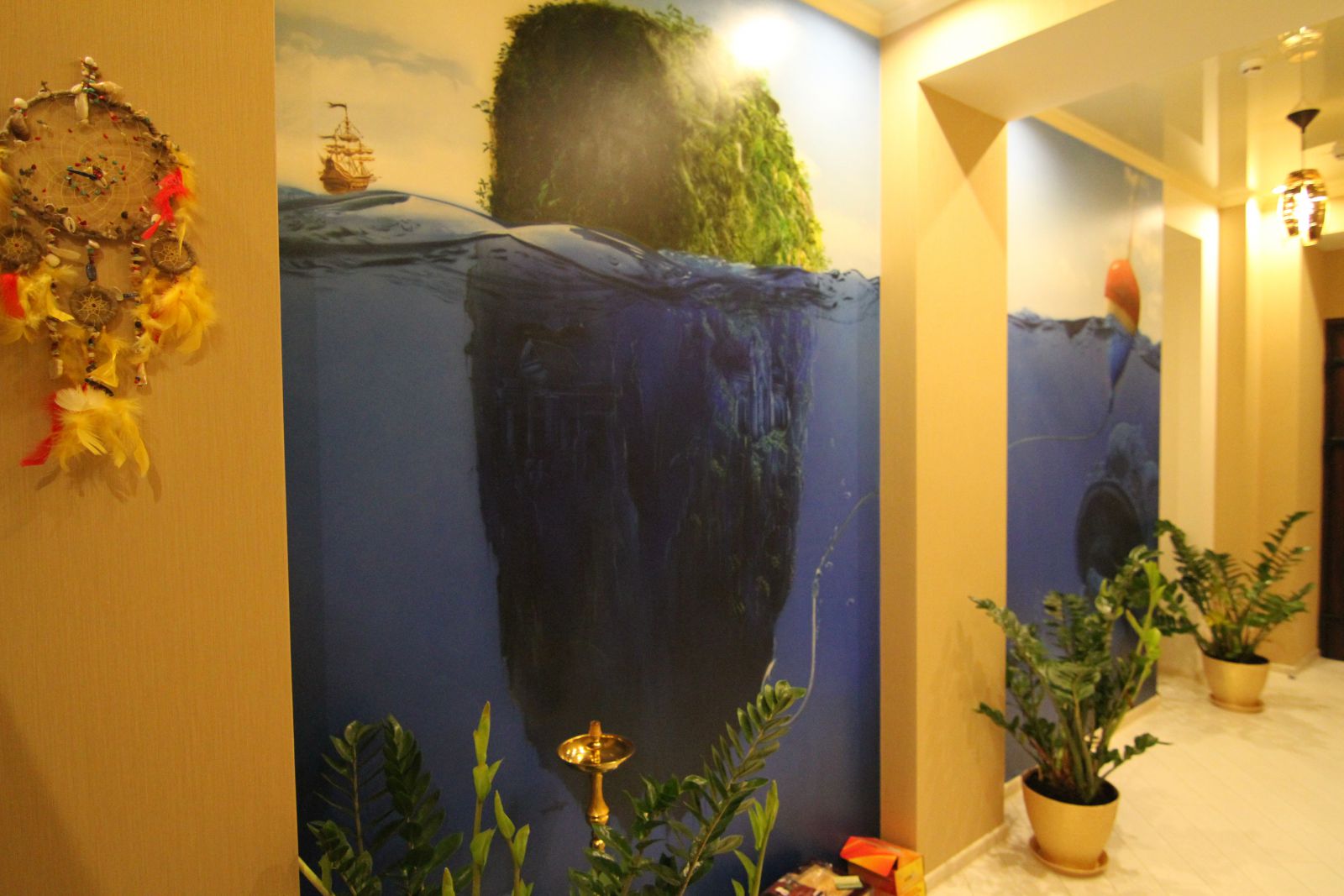Last time when I posted article about good airbrush websites I’ve mentioned one website with article titled as “Another way of tuning airbrushes”. This article was talking about the quality of water used for mixing colors, its effect on your artwork and provided some solutions.
While scientists and tinkerers think of ways to tune airbrushes to improve their performance, I’ve tried different approach, since the airbrush is only one of the components used during airbrushing. The others are water, air and paint. Paint will always be the result of the manufacturer’s choice; all artists can do is change the mix ratio by adding more / less water to paint. There’s also not a lot that artist can do about the quality of air. But there is something that can be done about the quality of water used for spraying.
Here is an interesting fact:
The water that flows out of my tap at home has a mineral content of approximately 300 ppm, which means there is 300 milligram of dissolved solids inside every liter. That may not seem like a lot, but all particles have to pass the section of the 0.2 mm nozzle minus the part of the needle that is inside of it.
The less there is of those, the better the airbrush will perform, because less solid particles per volume has to pass through the narrow gap between needle and nozzle.
I totally agree. Small and big particles can make a difference. Even some paints with big pigment particles can make a problem for your airbrush fine nozzle size. You will have to buy paint with smaller, softer pigments and find a solution for your water source or even re-think your airbrush air source if there is any problem with water coming out.
The author of this article has actually provided his solution for the problem he experienced by using as clean water as possible. For this purpose he uses a reverse osmosis system. If you got water problem as well you can follow this advices.
Also there were some tests with magnetizing water and the conclusion does not need any further comments:
I used the processed water in the Iwata Custom Micron SB and the results were stunning… Straight out of the box the gun already sprayed smoother than any other airbrush I owned, but with the water treatment, its handling became beyond incredible.
My dear friend Per Corell has read the article and he had come to me with his opinion on this problem:
Hi. I had mentioned before that one of my first airbrushes was the “Fisher CO2“. I just read the article from the link you added, where they discussed water purity and its impact on spray quality.
I will suggest something that probably will have even more impact, something already known but maybe forgotten. CO2 is heavier than air, it is completely dry because moisture will instantly chemically react with CO2 and I wonder if both aspects were the reason for using CO2 instead of air or even for producing special airbrushes to be used with CO2 and Air, — you probably guessed, — the “Fisher CO2” that has its name from being made for CO2. CO2 is said to be perfect for really fine work, maybe the fact that it is so dry, is the reason but also its weight (heavier than air) make it a better medium to carry the spray.
I don’t know if I have the airbrush made for CO2 but that airbrush works perfect with air, could it be better with CO2?
I just suggested CO2 and explained it. The „Fisher CO2“, a very well made airbrush that is a true double action gun that works differently than most of today’s double actions that leave a millimeter to regulate amount of air. This one works smoothly and offers full control over both functions, in particular the nozzle and spray system is very well made. Its name reflects its use with CO2 instead of air, guess CO2 was cheaper in the old days (I think this airbrush could be from the early 60’s).

I wonder if Airbrush Tattoo would profit from the use of CO2, I mean who knows what is contained in the condensed water from a small compressor. With CO2 you can be sure no bacteria’s or whatever could make people ill if pressure sprayed onto and into the skin.
I don’t know if this is at all relevant but I’ve noticed the smell coming from my compressor that carries a tank; I planned to clean it with antiseptics. ;)
I’m very happy that Per is very interested in many things and that he is always prepared to tell about his own view on the problem. Thanks to Per Corell for pointing that out and thanks to CommuniCats for a great topic.
When looking around myself I found using CO2 with airbrush has been discussed already on forums. Here is a snippet from one of them:
Personally, I prefer nitrogen over CO2; nitrogen is always dry, and I’m told CO2 has occasional moisture problems. Prices are virtually the same, so why risk it? A moisture trap would eliminate the problem, but why to buy something you don’t need?
Oxygen welding regulator purchased for $10 at a local surplus house. Another $3 for a fitting to convert from oxygen to nitrogen, and $24 for an airbrush pressure gauge. Done. A “Q” bottle holds approximately 120 cubic feet of gas, and should last for six months or more with average use.
What do you think about all these solutions or about the whole problem? For me it is fairly new direction in airbrushing and I have never thought about this.
I’ll be happy if you share it with your airbrush community.
Cheers.



